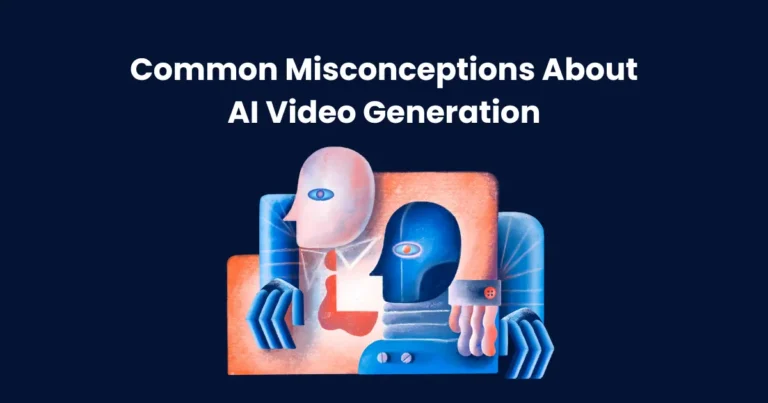AI-Generated Financial Advice Videos

Contents
In recent years, AI-generated financial advice videos have transformed how financial guidance is delivered. These videos are produced using artificial intelligence, ensuring personalized insights based on market trends and user data. As technology advances, AI-driven content creation continues to gain traction, offering a cost-effective and efficient solution for individuals seeking financial advice.
The financial industry has traditionally relied on human experts to provide guidance on investments, budgeting, and wealth management. However, with the rise of artificial intelligence, automated solutions have emerged to offer accurate, data-driven financial recommendations. Through machine learning algorithms and predictive analytics, AI-generated financial advice videos provide users with tailored insights, making complex financial information more accessible.
This article explores how AI-generated financial advice videos work, their benefits, potential challenges, and the best practices for creating effective AI-driven financial content.
How AI-Generated Financial Advice Videos Work
AI-generated financial advice videos leverage advanced machine learning algorithms, big data analysis, and natural language processing to create personalized and insightful financial content. These videos analyze real-time financial trends, user preferences, and historical data to deliver accurate and engaging recommendations.
The Role of Machine Learning and Data Analytics
Machine learning plays a crucial role in generating financial advice videos. AI systems process vast amounts of financial data, including stock market trends, economic indicators, and consumer spending patterns. By identifying correlations and predicting future movements, AI ensures that data-driven financial recommendations are created.
Additionally, sentiment analysis is used to assess market confidence by evaluating news articles, social media discussions, and financial reports. This allows AI-generated content to incorporate relevant and timely insights.
AI’s Ability to Personalize Financial Advice
One of the most significant advantages of AI-generated financial advice videos is their ability to offer personalized financial guidance. AI systems analyze individual user data, such as income, spending habits, investment history, and risk tolerance, to generate customized financial recommendations.
Through automation, these videos can be tailored to different audiences, whether beginner investors, small business owners, or experienced traders. The ability to personalize financial advice enhances user engagement and ensures the content remains relevant to each viewer’s financial goals.
By combining machine learning, data analytics, and automation, AI-generated financial advice videos provide efficient and accessible financial education, making expert insights available to a broader audience.
Benefits of AI-Generated Financial Advice Videos
The adoption of AI-generated financial advice videos has revolutionized the way individuals and businesses receive financial guidance. By leveraging artificial intelligence, these videos provide cost-effective, personalized, and data-driven financial insights. Below are the key benefits of using AI-generated financial content.

1. Accessibility and Cost-Effectiveness
One of the most significant advantages of AI-driven financial videos is their accessibility. Unlike traditional financial advisors, who may charge high fees for consultations, AI-generated content is available at little to no cost. This makes financial advice more accessible to individuals and small businesses that may not have the resources to hire professional advisors.
Additionally, these videos can be produced in multiple languages and formats, ensuring that financial guidance is available to a global audience. Whether users are beginners or experienced investors, AI-generated videos provide tailored insights without geographical or financial limitations.
2. Improved Accuracy in Financial Forecasting
AI-powered financial analysis relies on real-time data and advanced algorithms to deliver precise market predictions. Unlike human advisors, who may be influenced by emotions or biases, AI assesses historical trends, macroeconomic indicators, and real-time market fluctuations to offer objective insights.
By continuously analyzing new data, AI-generated financial advice videos can adapt to market changes and provide up-to-date recommendations. This enhances the accuracy of financial forecasts and minimizes the risk of outdated or incorrect advice.
3. Personalized User Experience
AI-driven financial videos cater to individual user preferences by analyzing financial habits, investment goals, and risk tolerance. Unlike generic financial advice, AI-generated content is tailored to the specific needs of each viewer.
For example, an AI-powered video can recommend personalized investment strategies based on a user’s financial history and risk appetite. This level of customization improves user engagement and increases the likelihood of successful financial decision-making.
4. Consistency and Scalability
Human financial advisors have limited availability, and their advice may vary depending on experience, mood, or workload. In contrast, AI-generated financial advice videos provide consistent recommendations without fatigue or variation.
Moreover, these videos can be scaled to reach millions of users simultaneously. Whether it’s a small investor or a corporate client, AI-powered financial content can deliver insights efficiently, ensuring that everyone receives accurate and reliable financial advice.
5. Data-Driven Decision Making
Financial decisions require precise and well-analyzed data. AI-generated financial advice videos leverage big data and predictive analytics to present users with evidence-based recommendations. By eliminating guesswork, AI enhances the decision-making process and helps individuals make informed financial choices.
Through automation and data analytics, AI-generated financial advice videos continue to reshape the financial industry by making expert insights more accessible, accurate, and personalized for a diverse range of users.
Challenges and Limitations of AI-Generated Financial Advice Videos
Despite the numerous advantages of AI-generated financial advice videos, there are several challenges and limitations that must be considered. While AI-driven content creation offers efficiency and scalability, it also raises concerns related to data accuracy, ethical implications, and the lack of human judgment in financial decision-making.

1. Ethical and Privacy Concerns
The use of artificial intelligence in financial advising requires access to vast amounts of personal and financial data. However, data security and user privacy remain major concerns. If sensitive financial information is not adequately protected, it could be misused by malicious actors or lead to identity theft.
Additionally, ethical concerns arise when AI-driven financial content is used to promote biased or misleading advice. AI systems must be programmed to follow ethical guidelines and ensure transparency in financial recommendations.
2. Dependence on Data Quality
The accuracy and reliability of AI-generated financial advice videos depend entirely on the quality of the data being analyzed. If AI systems rely on outdated, incomplete, or biased data, the financial recommendations produced may be inaccurate or misleading.
Since AI models learn from historical data, any errors or biases present in the dataset can be reflected in the advice given. To ensure trustworthy financial insights, continuous monitoring and data validation are required.
3. Lack of Human Judgment and Emotional Intelligence
AI-generated financial advice is based on algorithms and statistical analysis, but it lacks the human intuition and emotional intelligence that professional financial advisors offer. While AI can process numbers and trends, it cannot fully understand the emotional aspects of financial decision-making, such as an investor’s risk tolerance under stressful market conditions.
Human financial advisors provide context, experience, and the ability to assess unique personal situations. In contrast, AI-generated videos operate within predefined parameters, making them less adaptable to complex financial scenarios that require subjective judgment.
4. Regulatory and Compliance Risks
Financial advisory services are heavily regulated to protect consumers and ensure fair practices. AI-generated financial advice videos must comply with financial laws and regulations to avoid legal complications. However, since AI operates autonomously, ensuring compliance with regional and international financial regulations can be challenging.
Governments and regulatory bodies may require AI-generated content to be monitored and audited regularly to prevent misleading or unethical financial guidance. Failure to comply with such regulations could lead to reputational damage and legal consequences for companies using AI-driven financial content.
5. Limited Ability to Handle Unpredictable Market Events
AI-generated financial advice is based on historical data and predictive models, but it struggles with sudden, unpredictable market events, such as economic recessions, political instability, or global crises. While AI can analyze past patterns, it may not react effectively to unprecedented financial disruptions.
Human financial experts, on the other hand, can adapt their strategies in real-time based on experience, intuition, and broader economic knowledge. This limitation highlights the importance of combining AI-driven insights with human expertise.
Best Practices for Creating AI-Generated Financial Advice Videos
To maximize the effectiveness of AI-generated financial advice videos, it is essential to follow best practices that enhance accuracy, engagement, and compliance. By using the right tools, ensuring regulatory adherence, and optimizing content delivery, AI-generated financial videos can provide reliable and valuable insights to a broad audience.

1. Choosing the Right AI Tools
Selecting high-quality AI-powered platforms is crucial for generating professional financial advice videos. Several AI-driven video creation tools, such as Synthesia, DeepBrain AI, and Pictory, use advanced natural language processing (NLP) and video automation to create engaging content.
When choosing an AI tool, consider the following factors:
- Data integration capabilities – The ability to process and analyze real-time financial data.
- Customization features – Options to tailor financial advice to different user needs.
- Voice synthesis and text-to-speech (TTS) – High-quality, human-like AI voiceovers enhance credibility and engagement.
2. Ensuring Compliance with Financial Regulations
Financial advisory content must comply with legal and regulatory frameworks to maintain trust and credibility. Since financial advice is a highly regulated industry, AI-generated content should adhere to laws set by regulatory bodies, such as:
- The U.S. Securities and Exchange Commission (SEC)
- The Financial Conduct Authority (FCA) in the UK
- Saudi Arabian Monetary Authority (SAMA)
To ensure compliance:
- Disclaimers should be included in videos, stating that AI-generated advice is not a substitute for professional financial consultation.
- AI algorithms should be audited regularly to detect biases and inaccuracies in financial recommendations.
- Content should be fact-checked by human financial experts before publication.
3. Enhancing Engagement with Interactive Elements
To keep viewers engaged, AI-generated financial advice videos should incorporate interactive and visually appealing elements. AI-powered features such as real-time stock market charts, animated infographics, and personalized financial scenarios can improve viewer retention.
Best practices for engagement include:
- Adding subtitles and voiceovers – Enhances accessibility for a global audience.
- Using dynamic visuals and animations – Increases content clarity and keeps viewers interested.
- Providing action-based recommendations – Encourages users to take steps based on the advice presented.
4. Maintaining Transparency and Accuracy
AI-generated financial advice videos should be transparent about the sources of information used to create recommendations. Since financial markets are highly dynamic, ensuring the accuracy of data is critical.
To maintain trust:
- Clearly indicate whether AI-generated insights are based on historical data, market trends, or predictive modeling.
- Regularly update AI models to reflect the latest economic developments.
- Offer viewers additional resources or professional consultation options for deeper financial guidance.
5. Personalizing Content for Different Audiences
Not all viewers have the same financial knowledge or investment goals. AI-generated financial advice videos should cater to different experience levels and financial needs.
To improve personalization:
- Offer content variations for beginners, intermediate investors, and experienced traders.
- Use AI-driven analytics to tailor recommendations based on user behavior and preferences.
- Provide multilingual video options to reach a global audience.
By following these best practices, AI-generated financial advice videos can deliver high-quality, personalized, and compliant financial insights. Choosing the right AI tools, ensuring regulatory compliance, enhancing engagement, maintaining transparency, and personalizing content are key factors that contribute to the success of AI-driven financial content. As AI technology continues to evolve, these best practices will help ensure that financial advisory videos remain informative, ethical, and user-friendly.
The Future of AI in Financial Content Creation
As artificial intelligence continues to advance, AI-generated financial advice videos are expected to become even more sophisticated, accurate, and interactive. With improvements in natural language processing (NLP), deep learning, and automation, AI-driven financial content will play a larger role in personal finance, investment strategies, and market analysis.

1. Advancements in AI Video Generation
AI-powered financial content creation is rapidly evolving with the integration of real-time analytics, enhanced video personalization, and deepfake-like realistic avatars. Future AI-driven financial videos will:
- Provide real-time market insights using live data integration.
- Feature hyper-realistic AI avatars that closely resemble human financial advisors.
- Adapt content dynamically based on a viewer’s financial history and preferences.
With these advancements, financial advice videos will become more engaging, credible, and user-specific.
2. The Integration of AI with Human Expertise
While AI can efficiently generate financial insights, human expertise remains essential for handling complex financial decisions and emotional factors in investing. In the future, AI-generated financial advice will likely be:
- Supervised by human financial advisors to ensure accuracy and compliance.
- Used as a hybrid model, where AI handles data-driven insights while human advisors offer contextual judgment.
- Enhanced with AI-powered chatbots, allowing users to interact with AI advisors in real time for more personalized guidance.
3. The Role of AI in Financial Education and Literacy
AI-generated financial content is expected to play a significant role in financial education by simplifying complex topics such as stock market investments, cryptocurrency, and wealth management. AI-driven financial platforms will:
- Create interactive learning experiences through personalized video lessons.
- Use gamification elements to enhance financial literacy for beginners.
- Offer AI-powered financial coaching, providing step-by-step guidance based on user goals.
4. Ethical AI and Regulatory Developments
As AI adoption in financial advisory services grows, new regulations and ethical guidelines will emerge to protect consumers. Future AI financial content will:
- Require stricter compliance with global financial regulations.
- Use transparent AI models to reduce bias and misinformation in financial recommendations.
- Implement advanced security measures to protect user data from cyber threats.
The future of AI-generated financial advice videos will be shaped by technological advancements, increased human-AI collaboration, and improved regulatory frameworks. As AI continues to enhance content creation, financial education and advisory services will become more personalized, efficient, and accessible to a global audience. However, the responsible use of AI, combined with ethical considerations and human oversight, will be essential to maintaining trust and accuracy in financial content creation.
Conclusion
The rise of AI-generated financial advice videos has revolutionized the way financial guidance is delivered. By leveraging artificial intelligence, these videos provide cost-effective, data-driven, and personalized financial insights to a wide audience. AI-powered financial content ensures accessibility, enhances market forecasting accuracy, and offers tailored recommendations based on user preferences.
However, despite its numerous advantages, AI-driven financial content also presents challenges, including ethical concerns, data accuracy issues, and regulatory compliance risks. While AI can analyze vast amounts of financial data efficiently, it lacks human judgment and emotional intelligence, which remain critical in financial decision-making.
To maximize the benefits of AI-generated financial advice, best practices such as using reliable AI tools, ensuring compliance, maintaining transparency, and personalizing content should be followed. As AI technology continues to evolve, its integration with human expertise will shape the future of financial content creation.
Ultimately, AI-generated financial advice videos have the potential to democratize financial knowledge, making expert insights accessible to individuals worldwide. By balancing technological advancements with ethical considerations and regulatory compliance, AI-driven financial content will continue to improve, transforming the way people manage their finances in the years to come.






